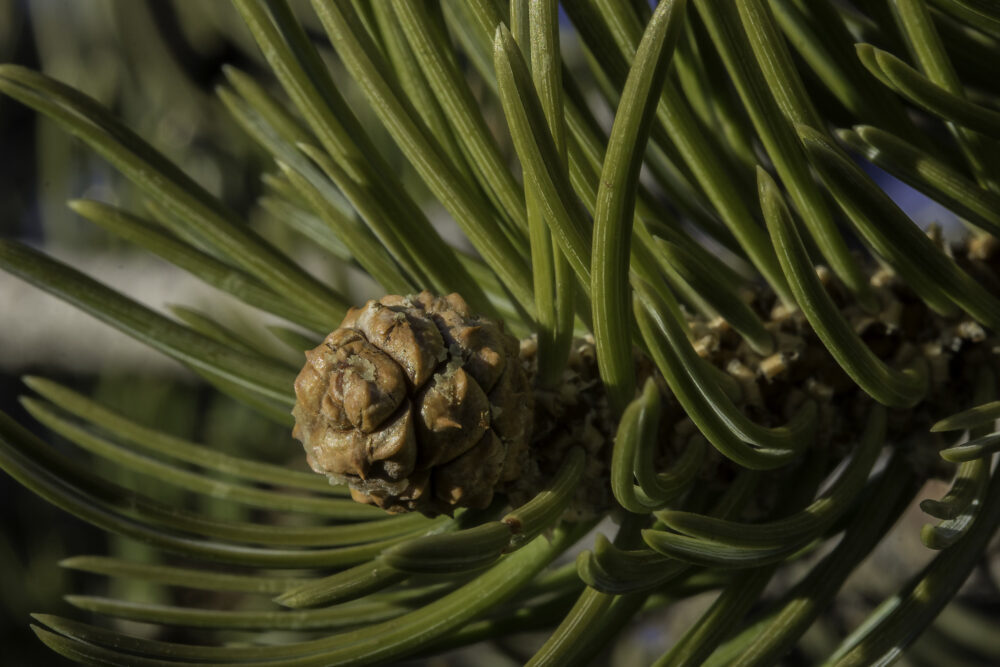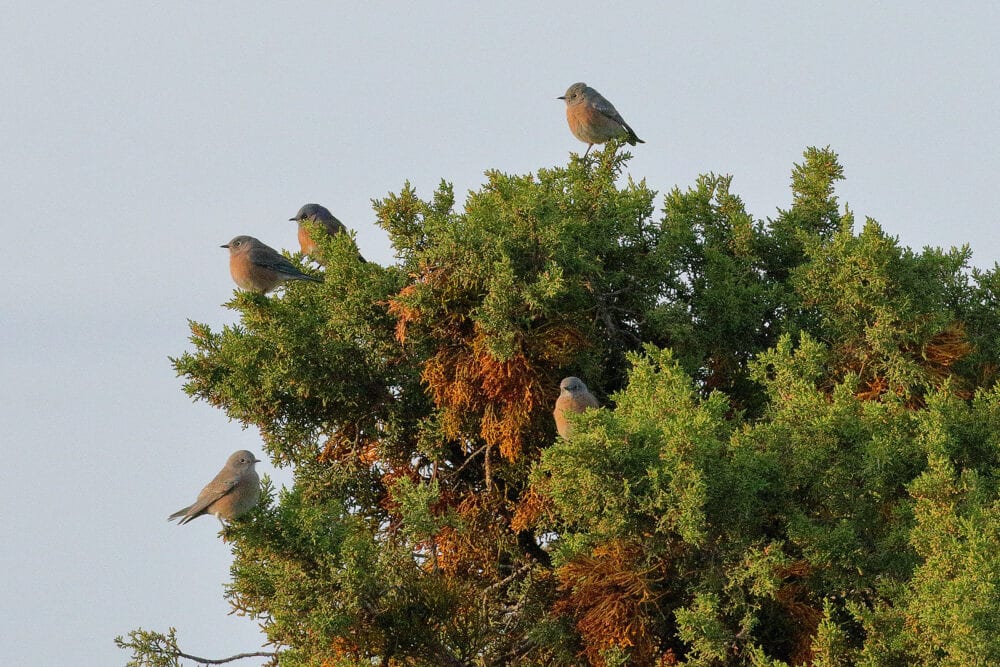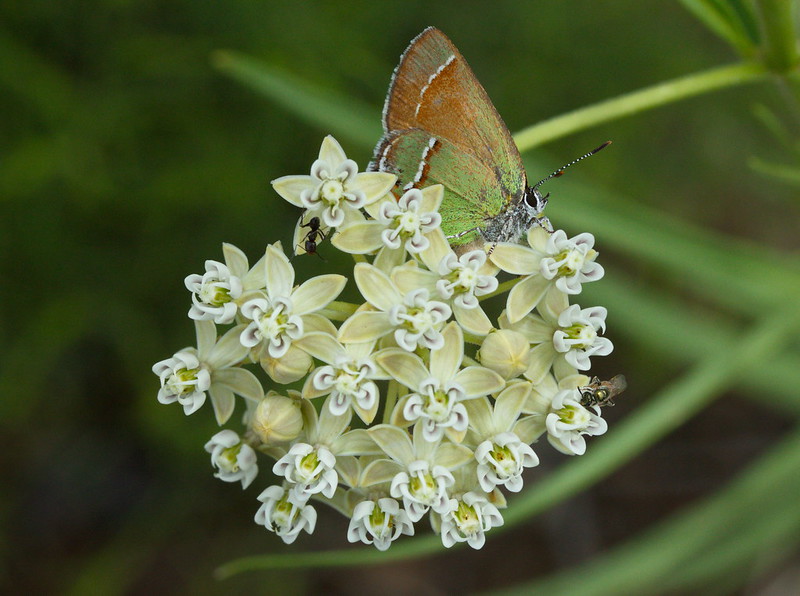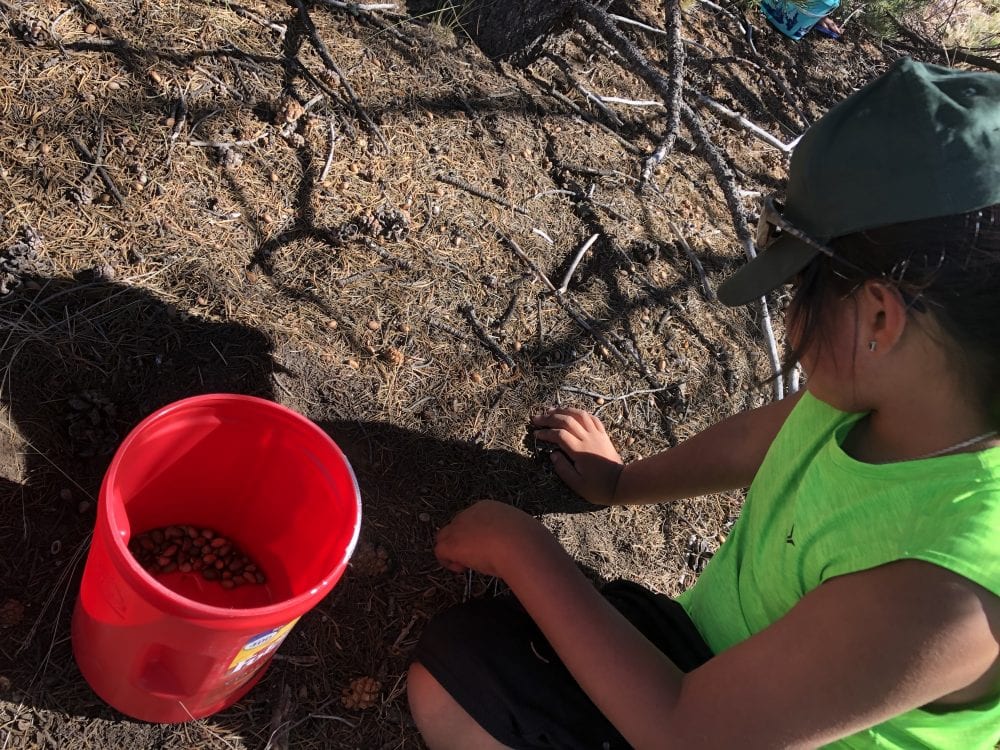

Welcome to Take It Outside! We are continuing our tour of the forests of Northern New Mexico by focusing on the most common forest type in our state: the piñon-juniper woodland. These trees are generally found at higher elevations than cottonwood trees, but lower elevations than our ponderosa pines.
Piñon and juniper trees have many uses for humans, for wildlife, and for science. Learn about some of them in today’s post.
Blog Post:
Biologist and PEEC member Ruth Lier explores the sneeze-inducing world of juniper pollen and how pollen is used scientifically in both local and global studies. Read today’s blog post here.
Craft:

The juniper hairstreak butterfly is uniquely adapted to rely on juniper trees for survival. A female butterfly lays a single egg on the tip of each branch, and when the caterpillar hatches, it camouflages perfectly with the tree’s needles. As the caterpillar grows, it eats only juniper needles.
Role-play the life cycle of a butterfly and its incredible connection with its host plant by building a simple obstacle course in your own yard.
Outdoor Challenge (Beginner):

Adopt a tree. Find a tree near your house. Get to know your tree in the following ways:
- Make a crayon rubbing of the bark and leaves for your nature journal
- Use a string or measuring tape to measure the circumference of the tree trunk
- Describe the smell of the tree and its needles or leaves
- Listen to the tree sway in the wind
- Sit with the tree and imagine the world from the tree’s perspective
Outdoor Challenge (Advanced):
Explore the various uses of trees by wildlife in your area. Can you find examples of the following?
- Pollinators visiting trees
- Evidence that fruit and seeds have been eaten by wildlife
- Birds and squirrels nesting in trees
- Animal burrows among the roots of trees
- Cavity excavation by woodpeckers in dead trees
- Beetles and other decomposers breaking down dead trees
Other Resources:
- Visit PEEC’s online Tree Guide to learn more about the trees found in and around Northern New Mexico.
- Check out this 4-minute video to see how paleoclimatologists have used pollen data to recreate a climate history for the Valles Caldera.
- Learn about other ways scientists use natural records to determine global climate history in this resource from environmental photographer Gary Braasch.
Share Your Experience:
Tell us about the trees and forested areas near you! We’d love to see your photos, too. Please send them to takeitoutside@peecnature.org or share them on Facebook or Instagram with the hashtag #peectakeitoutside.
Join us tomorrow to explore ponderosa forests!
